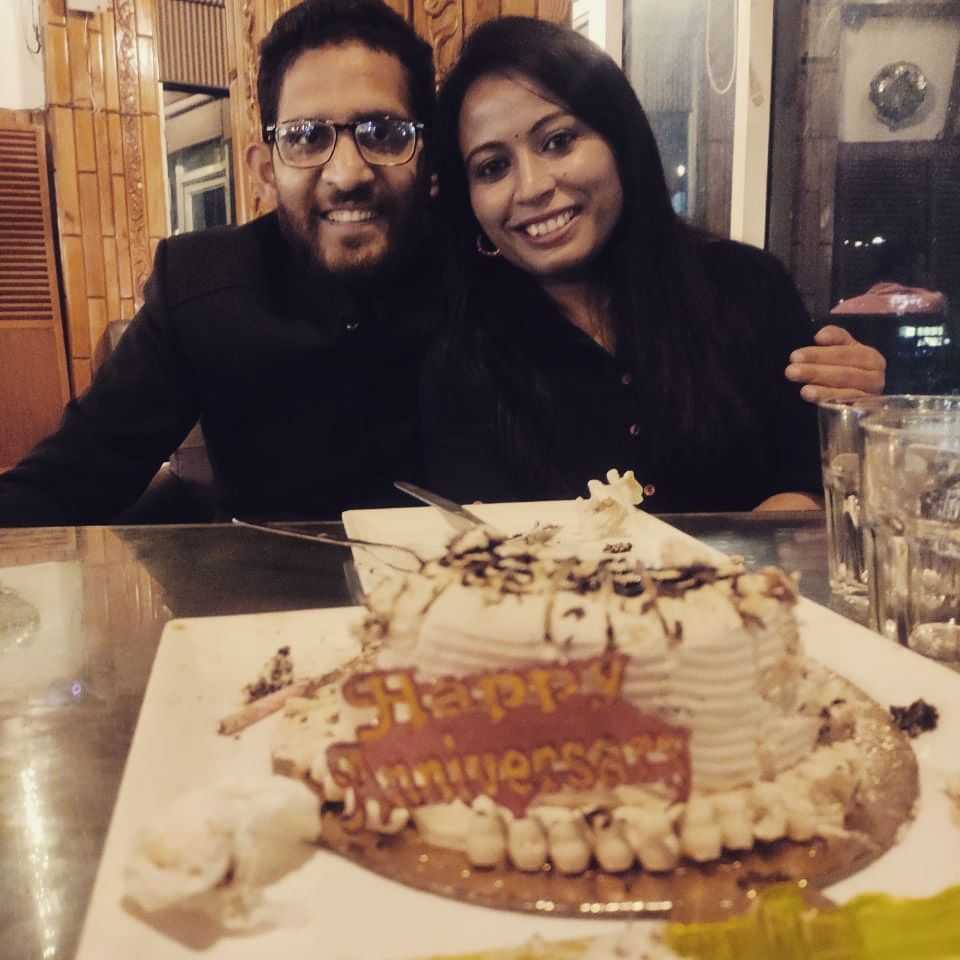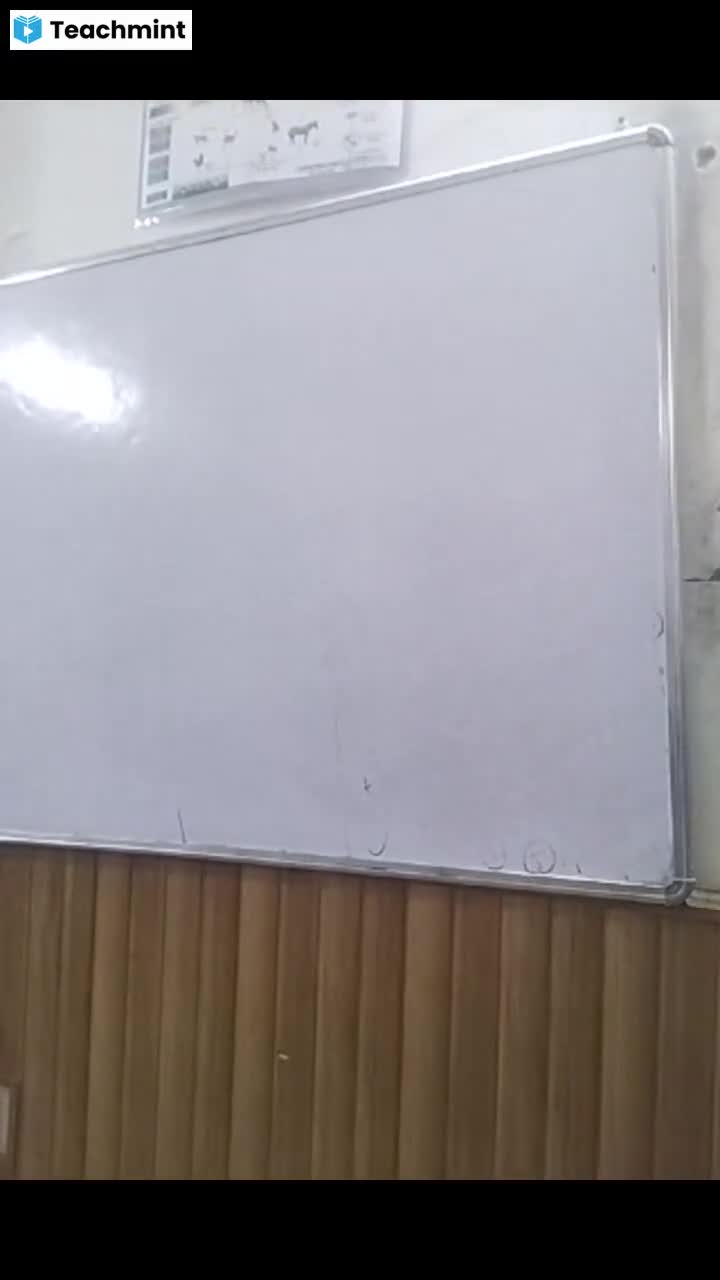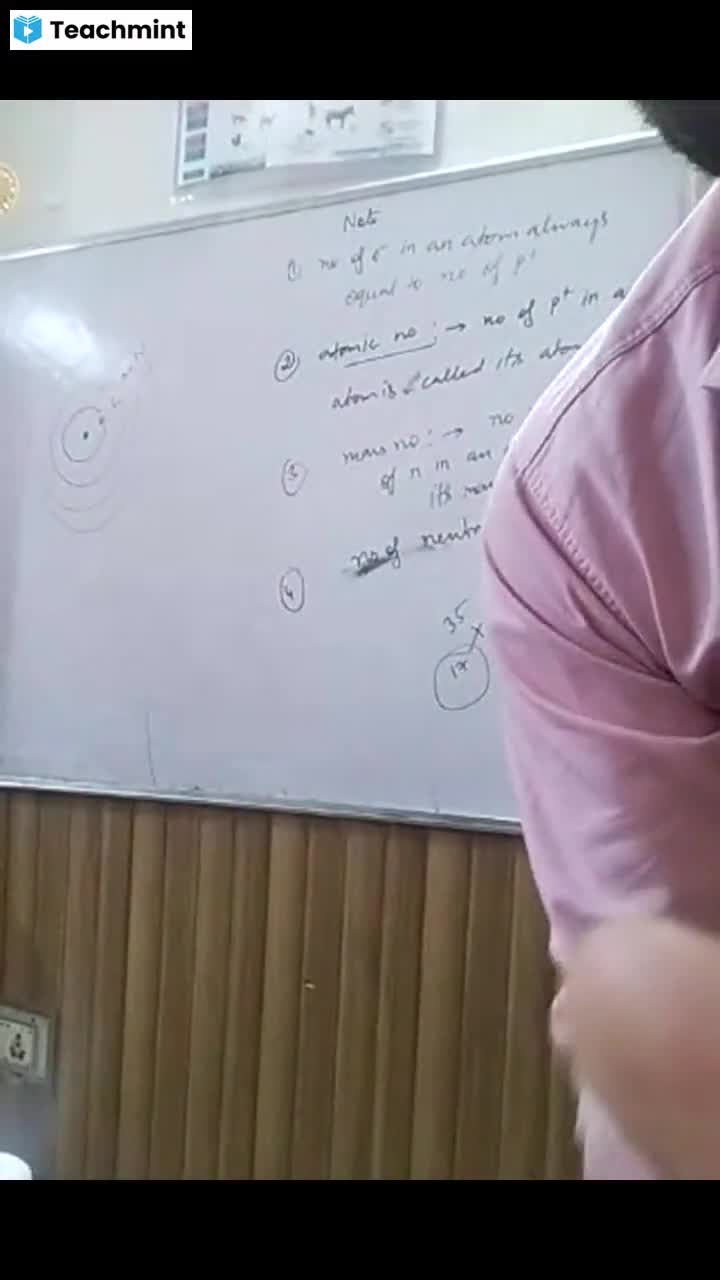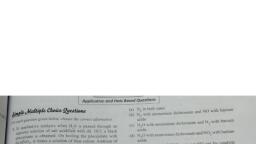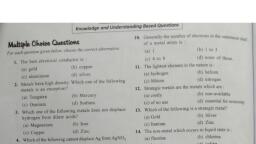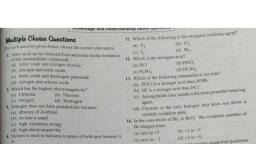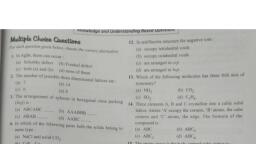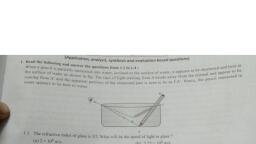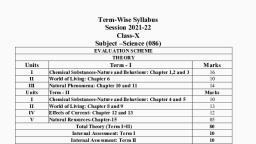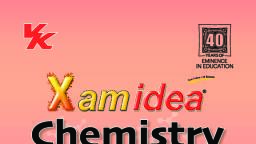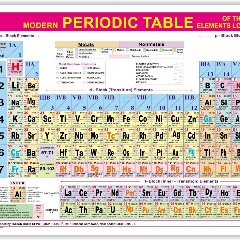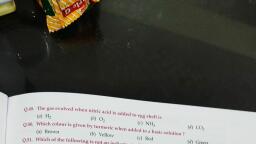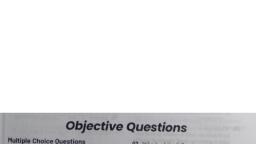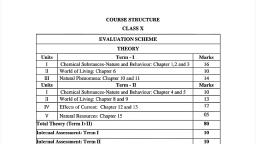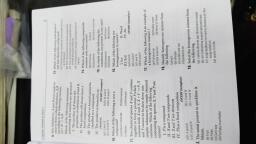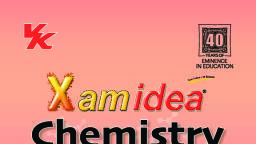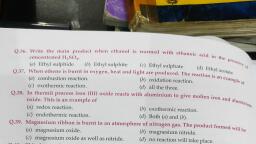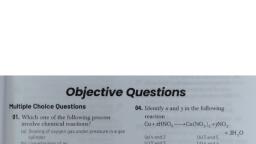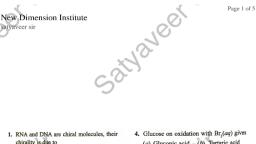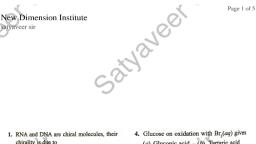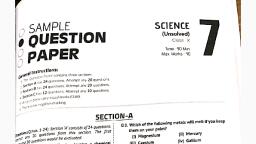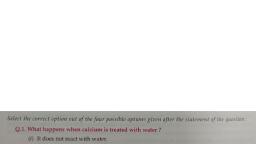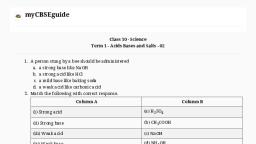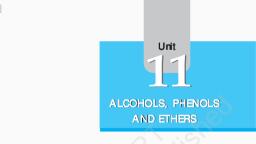Page 1 :
Application and Hots Based Questions, Simple Maltiple Choice Qyestions, 6. Yellow colour is produced in basic solution by which of, the indicators ?, For each question given below, choose the correct alternative., (a) methyl orange, (c) methyl blue, 7. Mixing of an acid in water is:, (b) litmus, 1. The formula of bleaching powder is :, (d) phenolphthalein, (b) CaCO,, (d) CaOCl,, 2. CO, is produced when dil. HCI reacts with:, (b) limestone, (a) CatOH);, (c) CaCly, (a) an exothermic reaction, (b) an endothermic reaction, (a) marble, (c) neither exothermic nor endothermic, (c) chalk, 3. Washing soda (Na,CO, 10H,O) is used in :, (a) preparation of glass, (d) all of these, (d) depends on the nature of acid, 8. When zine reacts with NaOH, the products are:, (b) preparation of soap, (c) paper industry, 4. When phenolphthalein is added to a solution, its colour, becomes pink, the solution is:, (a) Na,ZnO, + H,, (c) Na,ZnO, + H,0, 9. When a drop of phenolphthalein is added to solution A,, it turns pink. The solution A is:, (b) Na,ZnO, + 0,, (d) Na,Zno, + H, 02, (d) all of these, (a) acidic, (b) basic, (b) H,SO, (d) HNO,, (a) HCI, (c) neutral, 5. The bases/alkalies ionise in water to produce:, (d) all of these, (c) NaOH, 10. The pll of IM NAOH will be:, (a) H,0 ions, (c) OH (ag) ions, (b) H ions, (a) 1, (b) 7, (d) none of these, (c) 14, (d) zero
Page 2 :
Sample Papers, II. The pH ofIM HCI will be:, 27, (c) After washing with plenty of water apply solution, of sodium hydroxide on the hand, (d) Neutralise the acid with a strong alkali, (a) zero, (b) 1, (c) 7, (d) 14, (NCERT Exemplar), Complex Maltiple Choice Questions, 19. Which of the following phenomena occur, when a small, amount of acid is added to water?, 1 What happens when a solution of an acid is mixed with a, solution of a base in a test tube?, ) The temperature of the solution increases., (i) The temperature of the solution decreases., (i) The temperature of the solution remains the same., (iv) Salt formation takes place., (a) Only (i), (c) () and (iii), (1) lonisation, (i) Dilution, (ii) Neutralisation, (iv) Formation, (b) (i) and (iii), (d) (ii) and (iv), (a) (i) and (ii), (c) (ii) and (iii), (NCERT Exemplar), 20. Which of the following statements is correct about an, (b) (i) and (iii), (d) (i) and (iv), (NCERT Exemplar), aqueous solution of an acid and a base?, () Higher the pH, stronger the acid, (ii) Higher the pH, weaker the acid, (iii) Lower the pH, stronger the base, (iv) Lower the pH, weaker the base, 13. A sample of soil is mixed with water and allowed to settle., The clear supernatant solution turns the pH paper, yellowish-orange. Which of the following would change, the colour of this pH paper to greenish-blue?, (b) (ii) and (iii), (d) (ii) and (iv), (NCERT Exemplar), (a) (i) and (iii), (c) (i) and (iv), (a) Lemon juice, (c) Common salt, (b) Vinegar, (d) An antacid, (NCERT Exemplar), 21. Common salt besides being used in kitchen can also be, used as the raw material for making:, (i) washing soda, (iii) baking soda, 14. Sodium carbonate is a basic salt because it is a salt of:, (a) strong acid and strong base, (b) weak acid and weak base, (c) strong acid and weak base, (d) weak acid and strong base. (NCERT Exemplar), 15. Calcium phosphate is present in tooth enamel. Its nature is:, (a) basic, (ii) bleaching powder, (iv) slaked lime, (b) (1). (ii) and (iv), (d) (1), (iii) and (iv), (NCERT Exemplar), (a) (1) and (ii), (c) (0, (ii) and (iii), (b) acidic, (d) amphoteric., (NCERT Exemplar), 22. What happens when a solution of an acid is mixed with a, solution of a base in a test tube?, (c) neutral, 16. Which of the following gives the correct increasing order, of acid strength?, (a) Water<acetic acid < hydrochloric acid, (b) Water<hydrochloric acid < acetic acid, (c) Acetic acid <water < hydrochloric acid, (d) Hydrochloric acid < water < acetic acid, (i) Temperature of the solution decreases, (ii) Temperature of the solution increases, (iii) Temperature of the solution remains the same, (iv) Salt formation takes place, (a) (i) and (iv), (b) (1) and (iii), (c) (ii) only, 23. Which one of the following salts does not contain water, of crystallisation?, (d) (ii) and (iv), (NCERT Exemplar), 17. Sodium hydrogencarbonate when added to acetic acid, evolves a gas. Which of the following statements are true, about the gas evolved?, (1) It turns lime water milky., (ii) It extinguishes a burning splinter., (ii) It dissolves in a solution of sodium hydroxide., (iv) It has a pungent odour., (a) (i) and (ii), (c) (), (G) and (iv), (b) Baking soda, (d) Gypsum, (a) Blue vitriol, (c) Washing soda, 24. The apparatus given in the adjoining figure was set up to, demonstrate electrical conductivity., 6 volt battery, Bub, Switch, (b) (i), (ii) and (iii), (d) (i) and (iv), (NCERT Exemplar), 18. If a few drops of a concentrated acid accidentally spills, over the hand of a student, what should be done?, (a) Wash the hand with saline solution, Nail, Dilute acid solution, (b) Wash the hand immediately with plently of water, and apply a paste of sodium hydrogencarbonate, Rubber cork
Page 3 :
Which of the following statement(s) is (are) correct?, () Bulb will not glow because electrolyte is not acidic., (ii) Bulb will glow because HCI is a strong acid and, furnishes ions for conduction., (ii) Bulb will not glow because circuit is incomplete., (iv) Bulb will not glow because it depends upon the type, of electrolytic solution., (b) (i) and (iv), (d) (iv) only, (a) (i) and (iii), (c) (ii) only, 25. Which of the following statements is correct about an, aqueous solution of an acid and of a base?, (i) Higher the pH, stronger the acid, (ii) Higher the pH, weaker the acid, (iii) Lower the pH, stronger the base, (iv) Lower the pH, weaker the base, (a) (i) and (iii), (b) (ii) and (iii), (d) (i) and (iv), (c) (i) and (iv), 26. Which of the following statements is not correct?, (a) All metal carbonates react with acid to give a salt,, water and carbon dioxide, (b) All metal oxides react with water to give salt and acid, (c) Some metals react with acids to give salt and hydrogen, (d) Some non-metal oxides react with water to form an, acid., (NCERT Exemplar), 27. Identify the correct representation of reaction occurring, during chloralkali process., (a) 2NaCI() + 21H,O), - 2NAOH(), + Cl,(g) + H,(g), - 2NAOH(aq), + Cl) + H,(aq), (b) 2NaC(aq) + 2H,0(aq), (c) 2NaC(ag) + 2H,0() 2NAOH(aq), + Cl,(aq) + H,(aq), - 2NAOH(aq), + Cl,(g) + H,(g), (NCERT Exemplar), (d) 2NaCl(aq) + 2H,0(), 28. Which of the following are present in a dilute aqueous, solution of hydrochloric acid?, (a) H,0+ CF, (c) CI+ OH-, (b) H,O" + OH, (d) Unionised HCI, (NCERT Exemplar), 29. Which of the following is/are true when HCI(g) is passed, through water?, (i) It does not ionise in the solution as it is a covalent, compound., (ii) It ionises in the solution., (iii) It gives both hydrogen and hydroxyl ion in the, solution., (iv) It forms hydronium ion in the solution due to the, combination of hydrogen ion with water molecule., (a) Only (i), (c) (ii) and (iv), (b) Only (iii), (d) (iii) and (iv), (NCERT Exemplar)
